Combat aircraft. This evil Carlson ...
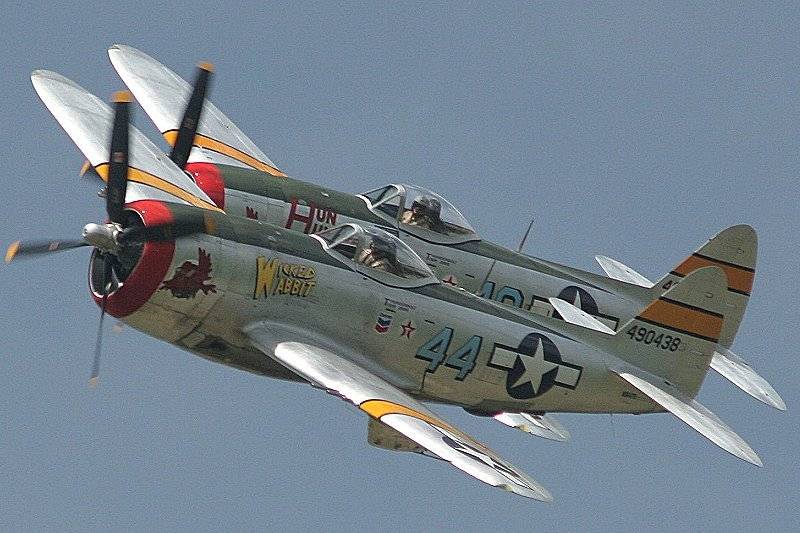
It was not for nothing that I remembered the literary hero. If you compare him with all the other characters of Mrs. Lindgren, then he clearly stands apart from everyone. Yes, there are all a little rebels like Peppy and Emil, or very refined ones like Kid or Calle. But Carlson is a separate phenomenon. They say that the idea of a flying freeloader and a thief to Mrs. Lindgren was thrown by one of the publishers, a Russian emigrant. I believe, because Carlson is more appropriate in the Russian head than in the Swedish one.
Our hero, whom I consider one of the best fighters of World War II, is similar to literary fiction. And Russian roots, and the fact that he really was very different from his contemporaries. And he was, to put it mildly, rather big.
In general, "a man in full bloom." But very vicious. Ripablic R-47 Thunderbolt.
It all began in 1940.
In the USA, a special conference was held at the USAAC Research and Testing Center, to which pilots who took part in the Battle of Britain were invited.
The conclusions of the conference were very disappointing: in the prospect of a war with Germany, the US Air Force did not have aircraft capable of withstanding the German. Perhaps, only the Lightning R-38 was suitable for something in this regard, and even then in comparison with the Bf.110, which clearly did not shine.
Yes, there were promising R-39s (which “didn’t” enter either the British or the Americans) and R-40C, which “Tomahawk”, R-40 “Kittyhawk” was already in service, but alas, it wasn’t a competitor to Bf.109 could be from the word at all. In the American version and application.
And there was still war with Japan, which had already begun its blitzkrieg on the Pacific Theater.
What Americans cannot take away is their ability to respond to problems. At least in those days. The US Air Force realized that they needed a breakthrough aircraft that could fight both the sturdy Bf.109 and the nimble A6M2.
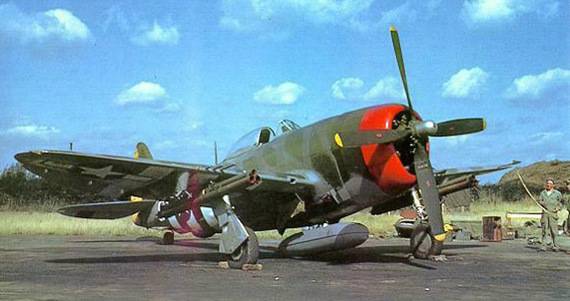
And here, oddly enough, they helped ... the Russians! And this is that moment in stories The US Air Force, which by no means canceled or painted over.
Indeed, the plane, which until the advent of the Mustang was the only support, accompanied by bombers, was created by two Russian emigrants, natives of the Russian Empire, who emigrated to America.
Alexander Mikhailovich Kartveli.
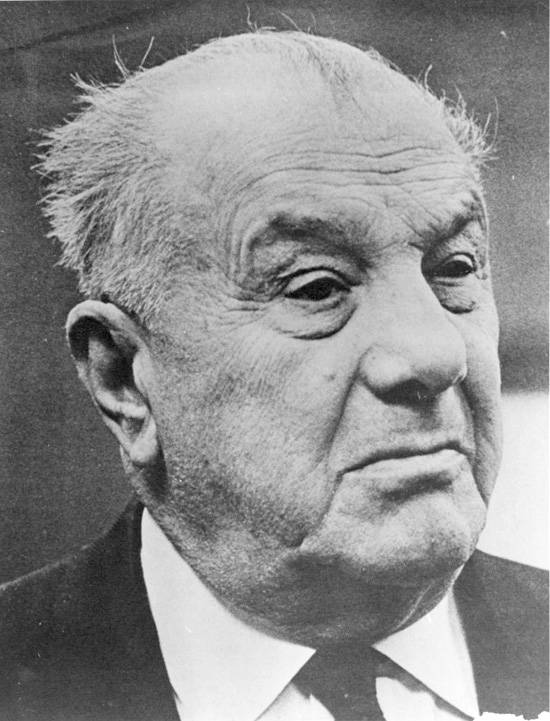
Born in Tiflis, graduated from Petrograd Institute of Technology, Higher aviation School and the Higher Electrotechnical School in France. He worked as a test pilot at the Blerio company, where, after a terrible accident, he parted forever with the sky.
So the world lost a pilot, but acquired a designer.
Alexander Nikolaevich Prokofiev-Seversky.
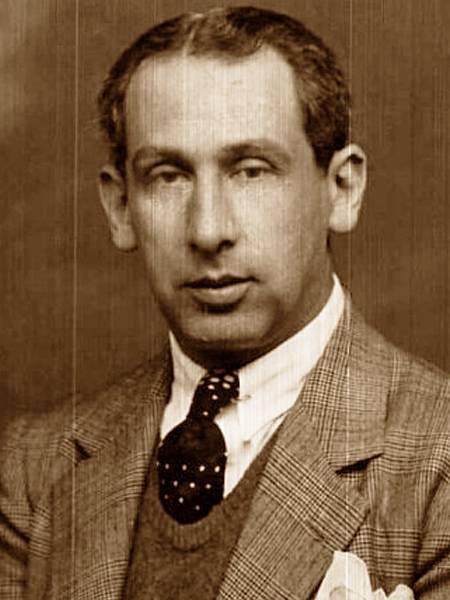
An even more interesting personality. Also a native of Tiflis, from the nobles. The pilot, a participant in the First World War, an ace with 13 shot down planes, was shot down, lost his leg and flew on the prosthesis with the personal permission of Tsar Nicholas II.
He appeared in the USA as an employee of the Russian embassy, was an assistant to the naval attaché for aviation matters. When the Russian embassy was closed after the conclusion of a separate peace with Germany, he remained in the United States.
The surname Seversky, under which Alexander Nikolayevich went down in the history of US aviation, is the stage name of his father, the owner of the theater, who played on stage under this name.
Seversky was also an excellent engineer. In a short time, he patented several very interesting things such as a device for refueling in the air or an oil shock absorber chassis. And the first bomber sight in 1925, the US government bought from Seversky. For just a fabulous amount of $ 25.
And it so happened that in Seversky's company, Seversky Aircraft Corp., the two fellow countrymen met, and Kartveli became the chief engineer. And when Seversky removed the board of directors in 1939, Kartveli became the technical director.
The company was renamed the Republic Aviation Company.
And it was in this company that the XP-47V project was born. Heavy fighter project.
In general, 80% of the ideas laid down in the project were the ideas of Seversky, which by that time were no longer in the company. But the war, which began in Europe, showed that the idea of supporters of a light fighter, which included Kartveli, turned out to be untenable.
A light and very maneuverable aircraft with two 7,62 mm machine guns looked simply ridiculous in a hypothetical battle with the armored Bf.109E with its two guns and machine guns.
There was a funny situation: the ideas of the exiled Seversky began to embody their opponent Kartveli. But I had to, because his developments were not only not up-to-date, they generally had no chance of life.
And so with the efforts of the company "Ripablik" appeared in the metal XP-47V. “X” is “experimental”, “B” is in fact the third version after 47 and 47A, which were not built.
The plane turned out outstanding and ambiguous.
To begin with, the weight was enormous. Kartveli, realizing that speed and rate of climb would be needed, installed the most powerful engine that the US industry could provide. That is, Pratt & Whitney ХR-2800-21, which weighed 1068 kg dry. And everything else followed the engine.
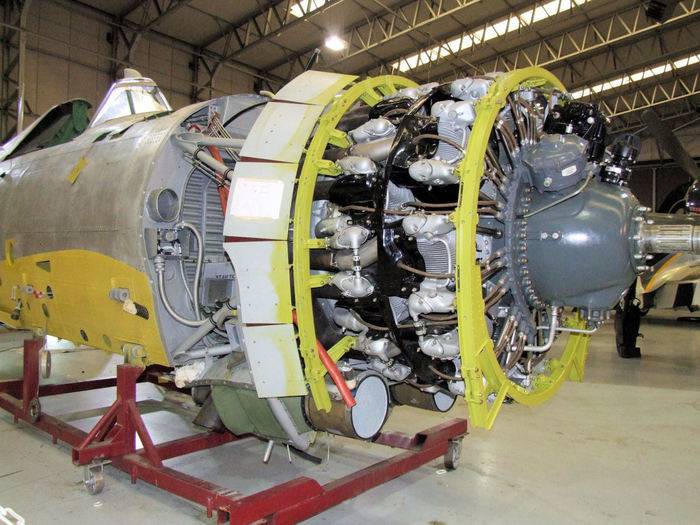
So the P-47 by weight was fat. 5 670 kg is pretty much. Sumo wrestler. For comparison: Bf.109E, a hypothetical rival, weighed only 2 kg, and Bf. 510 - 110 kg. And if we go further, some light bombers were inferior to this fighter. Su-6, for example, weighed only 040 kg on take-off.
Nevertheless, all this was more than compensated.
To begin with, as I said, a Pratt & Whitney ХR-2800-21 engine was installed on the plane, which produced 1850 hp on takeoff. Then the serial Pratt & Whitney R-2800-17 with a takeoff power of 1960 hp went into action.
That was a lot. Lots of. For comparison: the Hurricane II had an engine of 1260 hp, the Messerschmitt Bf.109E and even less - 1100 hp
Everything seemed luxurious, but no. There was also the problem of altitude, which also stood in the requirements put forward by the Air Force. The plane was supposed to be high-altitude, since it was supposed to be a fighter escorting bombers who do not fly very often on a shaver.
For an airplane to feel good at altitude, it needs air. What is higher is less. All the world's designers tried to use engine-driven turbocompressors to solve this problem.
The principle of operation of the TC was very simple: exhaust gases were sent to a turbine, which actuated a compressor that compresses the air. But simplicity is not always simple. Large sizes, frequent failures, burn-outs - these are not all the disadvantages of turbochargers.
It is worth saying that many designers could not properly resolve all issues related to turbochargers. Including our many engineers rescued.
But Kartveli could. And besides, in such an unusual way that I allow myself to describe it in detail.
Kartveli did not install the turbocharger on the engine, but carried it in the tail! It is clear that it was worth not just extra kilograms, but tens, or even hundreds. But having removed their head, they usually do not cry through their hair.
The result is a very twofold business.
Exhaust gases were sent to the tail through the pipeline. The pipeline weighed fairly, BUT: while the gases went to the compressor, they COOLED !!! That is, Kartveli solved this first problem, the problem of overheating of the fuel cell. Funny, but the TC really stopped crashing from overheating.
Further, a hefty snail TC allowed to make the nose smaller. And considering what a hefty engine they put there, it was simply charming, since it significantly improved the visibility of the pilot.
The total length of the pipelines was more than 20 meters, and the whole farm weighed almost 400 kg. Yes, I had to fight with the weight distribution, but it was worth it, and that's why.
It is advisable to cool the air that is supplied to the engine. And after the TC, where the air is compressed, it, according to the laws of physics, heats up quite well this way. For this, air radiators or intercoolers are used. Kartveli installed an intercooler there, in the tail, and took air for cooling the compressed in the turbine with an air intake located in the nose, under the engine.
Further, the air went along the bottom to the radiator, and exited through nozzles on the sides of the rear of the fuselage.
A very complicated, but interesting scheme, in which three air streams constantly moved along the axis of the aircraft: hot exhaust gases from nose to tail and external cold air for cooling, and a stream of cooled compressed air for the engine from tail to nose.
Another innovation was the lack of tanks in the wings. All tanks with gasoline and oil were in the fuselage and were protected. This eliminated the danger of losses when bullets and shells hit the wings and made it possible to place in the wings just a creepy essentially 12,7-mm machine gun battery with just great ammunition. But about weapons a little bit later.
Of course, in addition to protectors, there was still just armor. For the pilot and tanks, since they (the pilot and tanks) had to remain unharmed in battle.
From the front hemisphere they were well protected by a double star of the engine. In addition, the pilot had bulletproof glass and armor plate protecting the legs and lower part of the hull. Even the pilot had a 12 mm armor plate. In addition, all the aforementioned minced meat in the tail could also serve as additional protection, since the loss of TC and intercooler in battle did not affect combat efficiency at all.
But the most interesting element of the plane I would call the armored ski, which was installed at the bottom of the fuselage and closed the pipelines with gases and air. But its role was not that, but had the goal of saving the plane from complete destruction in the event of landing "on the belly", that is, without landing gear.
Kartveli’s wing also surprised. The R-47 wing had a very small area for such an aircraft. The wing load was large, it was 213 kg / sq. m, but since the wing shape was close to the ideal ellipse (Spitfire, hello!), the total wing resistance was very small, less than that of Messerschmitt Bf.109 and Foske-Wulf Fw.190.
R-47 developed a maximum speed of 663 km / h at an altitude of 7800 m with a landing speed of 148 km / h. The latest German fighter Bf.109F-4 at that time developed a maximum speed of 606 km / h at an altitude of 6200 m at a landing speed of 135 km / h. High landing speed is, of course, a serious thing, especially with such a mass, but, as it turned out, the corresponding chassis elements decide everything.
Due to the wide fuselage with a convex lower part, the plane immediately received the unofficial nickname “Jug” - “Pitcher”. In the UK, where the P-47 got under the Lend-Lease program, this nickname was considered an abbreviation for Juggernaut, a symbol of destructive evil power.
And the official name Thunderbolt was proposed by the director of one of the departments of Ripablic company Hart Miller.
Now about weapons.
First six, then eight wing machine guns "Colt Browning" M2. With ammunition of 300 rounds per barrel, but if you really need it, you could shove 400.
Yes, one could argue for a long time, which is better, 8 x 12,7 mm or like the A6M2 Zero, 2 x 20 mm + 2 x 7,7 mm. Or at Bf.109E.
In my personal opinion, the linear placement of weapons in the nose of the aircraft, as in the Bf.109F, was more useful. One 20 mm cannon in the collapse of the block and two synchronous 7,92 mm machine guns. It’s more convenient to aim, or rather shoot. Set of air sniper weapons. Ours generally managed on some Yak-9 modifications with one ShVAK gun and one 12,7 mm BS. And nothing dealt.
When you have eight such trunks flapping from your wings, and as the M2 machine gun was very good, you can also completely remove many questions. From such a cloud of steel cucumbers, at least something will fly. And 12,7 mm is not 7,62 mm.

Well, the Americans did not have a normal gun at that time. She didn’t exist at all, so they fought the whole war with the Spanish-Suis and the Colt Browning, if at all. “Oldsmobil”, which “Colt-Browning” M4 and M10 caliber 37 mm, which was put on the “Cobra”, was brought to mind only by 1942. Well, the Americans did not really like the characteristics of the guns, which nevertheless had more shortcomings than advantages.
The main thing was that in battle the enemy fighter “freezes” in the sight for literally a split second. A 37 mm gun may not have time to fire at all, a 20 mm gun at best once. And the M2 machine gun, which has a rate of 600 rpm, will have time to fire 3-5 bullets. And there are eight machine guns ... Total - 40 12,7 mm bullets. There is a chance to get.
So the R-47 became one of the fighters with a very high second salvo. Steeper was only the FW-190A-4 (4 x 20 mm, 2 x 7,92 / 13 mm). From the US - R-61 "Black Widow" (4 x 20 mm, 4 x 12,7 mm).
Plus bombs, NURSES ... Weighty.
And then the United States entered the war. To start with Japan. It turned out that the P-40s are not very good in the fight against the A6M2. But the main problem that the allies in Europe faced was the lack of an escort fighter for bombers going to German targets.
With the heavy bombers that the British, the Americans had more than normal. B-17 and B-24 among the Americans, “Wheatley”, “Lancaster”, “Halifax” - in general, there was something to bring the bombs to and dump the Germans on their heads.
However, German air defense very much prevented this. Including the work of fighter-interceptor pilots who regularly intercepted and exterminated. Not for nothing that the British switched to night work, at night there was a chance to reach the goal and work, and then go back. In the afternoon - more than doubtful.
And the fighters that the countries had (Hurricane, Spitfire, Kittyhawk) were not able to escort the bombers to the target. There was not enough flight range, and with altitude, frankly, it was not very beautiful. With the exception of Spitfire. But everything was decided by the range.
Therefore, as soon as escort fighters rolled off, German fighters appeared and began to do their job. Yes, the R-38 Lightning was able to go the distance from airfields in Britain to targets in Germany, but this car, albeit strong and well-armed, was not a worthy rival to the Messerschmitt. Around the same as Bf.110 was not a rival to Spitfire.
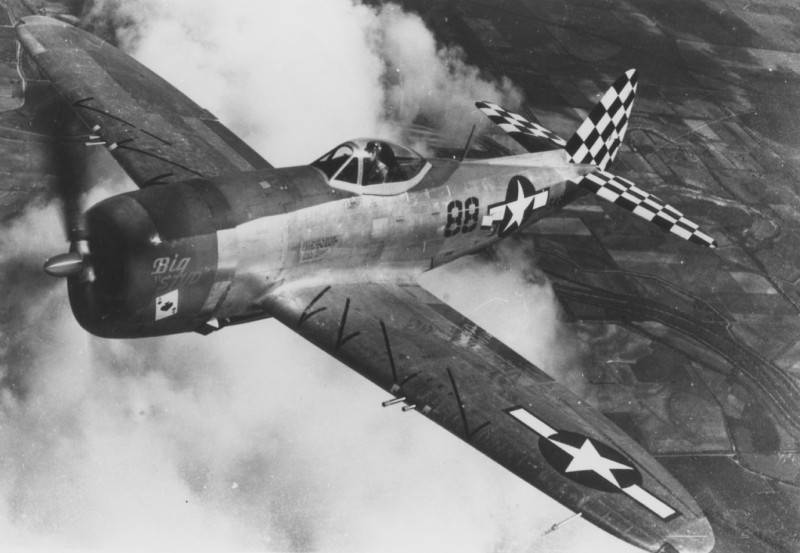
But, by and large, despite the shortcomings of the P-47 in the form of weight, which did not allow it to quickly gain height, the allies did not have much choice. The installation of an improved version of the Pratt & Whitney R-2800, lighter (by almost 100 kg), improved the speed data at altitudes, but at the bottom of the P-47 there was still an iron.
The aircraft gained altitude of 5000 m in 8,5 minutes; the rate of climb near the ground was 10,7 m / s, and the turn time was 30 s. At the same time, the Bf-109G and Fw-190A-3 had a climb rate of 17 and 14,4 m / s, and the turn time was 20 and 22 s, respectively.
Therefore, the P-47 tried to apply in operations where rate of climb did not play a special role. At the headquarters of the Allies, everyone liked the car. For lack of a better.
In general, in the world at that time (1942) there was only one aircraft that could compare with the R-47V at altitudes of more than 6000 m. Oddly enough, but it was a Soviet MiG-3.
Aircraft with an engine of only 1350 hp It developed a speed of 640 km / h at an altitude of 7800 m, and climbed to 5000 in 7 minutes. But the MiG's armament was sharply inferior to the R-47.
During the production of the R-47B, the design of the aircraft was constantly improved. It was to escort heavy bombers at high altitude that they began to use an anti-icing device for the windshield of the cabin. Further, for such flights, one-time suspension tanks for fuel were invented. A 757 liter (200 gallon) tank was made from plastic-impregnated pressed paper.
Such a tank increased the flight range to 2 km at a cruising speed of 000 km / h, which made it possible to accompany the bombers.
In the fall of 1943, the production of the P-47D aircraft began, on which a new Pratt & Whitney R-2800-63 engine with a water-methanol injection system was installed. Plus, they improved the lubrication and engine cooling systems.
The engine developed a take-off power of 2 hp, and with the injection of a mixture increased the short-term engine power to 000 hp Use afterburner allowed for 2 minutes. Forcing the engine provided a speed increase of up to 430 km / h.
In addition to hanging tanks, the fuel supply in the main tanks of the fuselage was increased to 1150 liters. This made it possible to combine fuel tanks and bombs on an external sling, depending on the flight range to the target. The maximum bomb load was 2500 pounds (1130 kg). Two bombs of 1000 pounds (450 kg) and one of 500 pounds (225 kg). Or instead of a 500-pound bomb, a fuel tank of the same weight.
If there was a need for a bombing strike, then often one machine gun was removed from each wing to lighten the weight and the ammunition was reduced from 425 to 250 rounds.
In general, underwing suspensions greatly reduced speed, to 70 km / h, but the need for a toothy fighter-bomber with a large radius of action was very great, especially at the Pacific Theater.
And the fact that the R-47 could safely fly at such an altitude that the main aircraft of the enemy could not afford, made it indispensable both for escorting bombers and for use as a fighter-bomber.
It was flying at high altitudes that required the development of a machine gun heating system. In general, initially such a system (electric) was, but it worked extremely capriciously and often could not cope with the task. And the lubrication of the machine guns froze, preventing the possibility of firing a shot.
Then, for the heating of machine guns, part of the hot compressed air from the turbocharger began to be diverted. Inside the aircraft, another airway tunnel appeared.
The experience of the combat use of the R-47 showed that, unfortunately, the “dead zone” of the rear view of the pilot is too large. As an attempt to correct the situation, it was decided to install the so-called teardrop-shaped lantern of Malcolm, such as that installed on the Spitfire of later modifications.
The idea came up, and after a series of improvements caused by the fact that the gargroth behind the lantern was removed, the teardrop-shaped lantern was registered not only on the Thunderbolt, but also on the Mustang.
The first combat flight of the P-47 took place on March 10, 1943. As often happens, the first pancake came out lumpy: because of the difference in frequencies between the British and American Air Force, the dispatchers simply could not adjust the Thunderbolt course, and they simply did not find the enemy. After eliminating the problems, the flights resumed, and on April 15, 1943 the first air battle took place with the participation of the R-47. The battle was marked by the first victory, was shot down by the FW-190.
And on August 17, P-47 was first escorted by B-17 bombers for the first time in the afternoon in raids on Schweinfurt and Regensburg. 19 victories and three losses were announced. In fact, the Germans confirmed the loss of 7 aircraft. True, in fairness it should be noted that the German fighters reportedly shot down 11 Thunderbolts.
So the R-47 began its combat activities at the front. And by 1944, this plane fought wherever the Allies fought, on all military operations, except Alaska.
Thunderbolt ended the war with such statistics: 3 victories (including those destroyed by bombs and missiles on the ground) with 752 aircraft lost. True, non-combat losses are also included in the losses here due to the fault of the pilots.
Pilots who fought on the R-47 in Europe reported the destruction of more than 68 trucks, 000 steam locomotives, more than 9 wagons, and 000 armored vehicles.
Honestly, the numbers seem to me more than overestimated. An order of magnitude. But the fact that the R-47 was hunting at the end of the war, even for single trucks, is a fact. And the fact that the Thunderbolt pilots inflicted real damage by assaults is obvious.
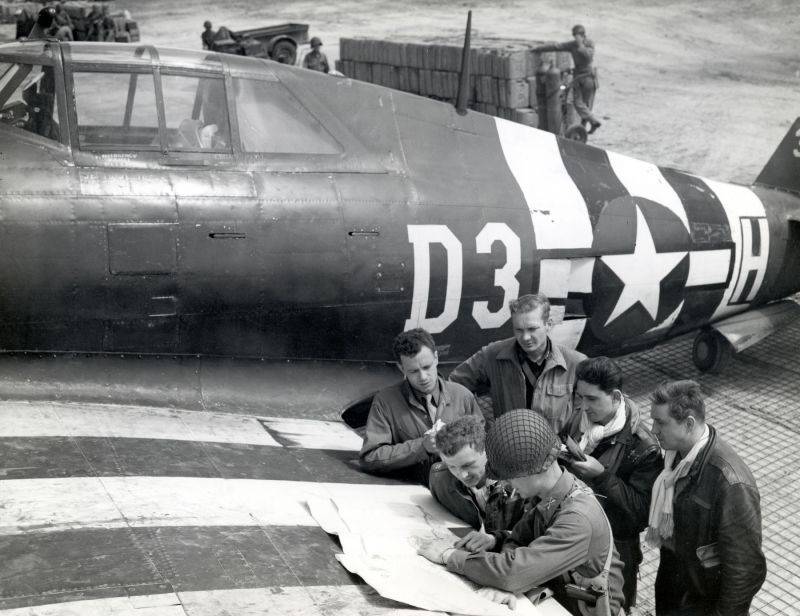
In general, the attack aircraft in the absence of decent opposition from the R-47 turned out to be quite good.
The Thunderbolt also fought on the Eastern Front. But not very actively used. 1944 P-1945D aircraft came to the Soviet Union in 196-47 under a lend-lease. They were used in parts of the South-Western Front as a high-altitude fighter in air defense of rear cities and in the 255th fighter aviation regiment of the Northern Air Force fleet.
Perhaps, it was only in the Northern Fleet that the R-47 made real combat sorties to cover torpedo bombers and attack aircraft and hunt small vessels as an attack aircraft.
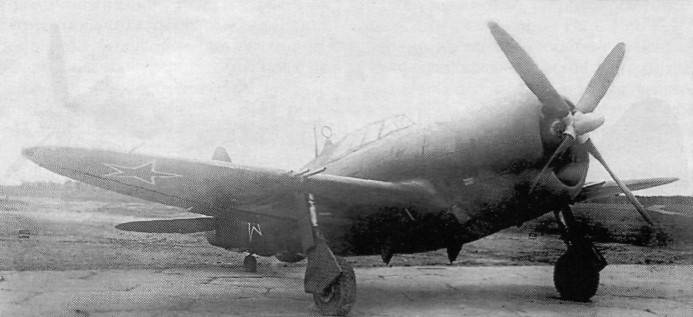
Still, it was not a plane of our fighting style.
One of the best engineer-pilots of the Flight Testing Institute Mark Lazarevich Gallay recalled the flight on the R-47:
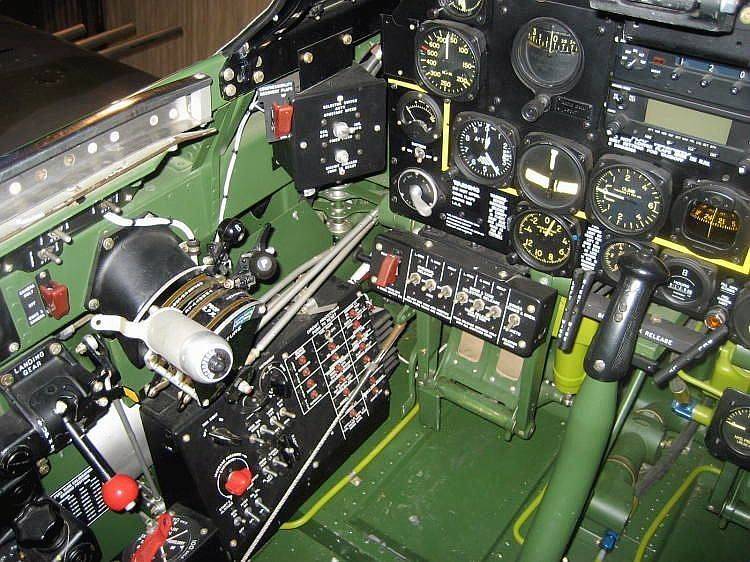
Nevertheless, it turned out as follows: when the R-47 arrived through the Arctic convoys to the north, the command of the Northern Fleet decided to arrange its tests for the aircraft. And since there was no own test base, the aircraft were transferred to the 255th IAP, where at that time the most powerful flight crews were formed.
Test flights were carried out from October 29 to November 5, 1944. At the same time, the possibility of basing the P-47 at polar airfields was investigated. The test results were generally favorable.
The Thunderbolt Protocol for Testing the P-47D-22-RE Aircraft was sent to the command address.
Report to the Commander of the Air Force of the Navy of the USSR Marshal Zhavoronkov
I report that according to the results of testing the P-47D-22-RE Thunderbolt aircraft of serial construction, I decided to equip one squadron of the 255th IAP with 14 Thunderbolt aircraft.
The squadron will perform the following tasks:
1. Long-range escort of bombers
2. Horizontal and low-altitude bombing based on the bomb load of up to 1000 kg per aircraft
3. Attack of convoy guard ships. ”
Marshal Zhavoronkov put a resolution on the document:
So the 255th IAKP became a regiment fully armed with the Thunderbolts.
From January 1943 until the end of the war, being part of the 5th mine and torpedo division of the Kirkenes Red Banner Air Force Division of the Northern Fleet, pilots of the 255th IAP made 3 combat sorties with an attack of 386 hours, conducted 4 air battles, as a result of which 022 aircraft were shot down the enemy.
Of these: Ju-88 - 3, Me-110 - 23, Me-109 - 88, FW-190 - 32, FW-189 - 2, He-115 - 2, BV-138 - 1.
As can be seen from the list, it was not important for our pilots who to shoot down. Since the Thunderbilt was able to handle any German aircraft, it was in our hands (and even the Hurricanes fought normally with ours), it became a rather formidable machine.
It is a pity that it was not possible to find data on the losses of 255 IAP. It would be very informative.
In general, it was a very good fighting vehicle. Yes, there were flaws with the maneuver. But this is a minus for our pilots who needed precisely the maneuver for the "dog dump", inevitable when covering their own and attacking other people's bombers and attack aircraft.
And the R-47 was created to cover long-range bombers marching at high altitude. That is what we did not have. But the plane is not to blame.
And so it was a fast (under certain conditions), well-armed, durable machine. Very tenacious.
The British pilots had such an anecdote (with British humor): “Thunderbolt pilot can easily avoid anti-aircraft fire. You have to run back and forth inside the plane, and they will never get into you. ”
As a fighter, the R-47 was not the best. But as a fighter-bomber and attack aircraft, he occupies a worthy place in the history of aircraft that won that war.
LTX P-47D-30-RE
Wingspan, m: 12,42.
Length, m: 10,99.
Height, m: 4,44.
Wing Area, m2: 27,87.
Weight, kg:
- empty aircraft: 4 853;
- normal take-off: 6;
- maximum take-off: 7 938.
Engine: 1 x Pratt Whitney R-2800-59 Double Wasp x 2000 hp (2 hp afterburner).
Maximum speed, km / h: 690.
Cruising speed, km / h: 563.
Practical range, km:
- without PTB: 1;
- with PTB: 2 898.
Maximum rate of climb, m / min: 847.
Practical ceiling, m: 12 192.
Crew, person: 1.
Armament:
- eight 12,7 mm Colt-Browning M2 machine guns;
- up to 1 kg of bombs, napalm tanks or NURS on external sling.
Units produced: 15 660.
On the whole - indeed, like Carlson, a man is at least somewhere (at least to shoot down, even to storm), in the prime of his life.
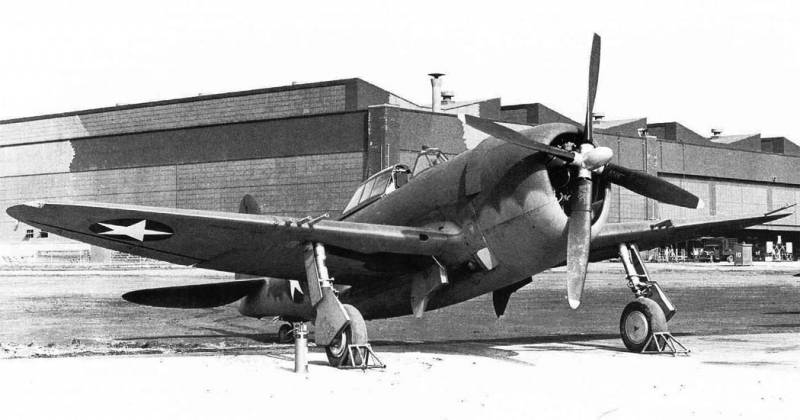
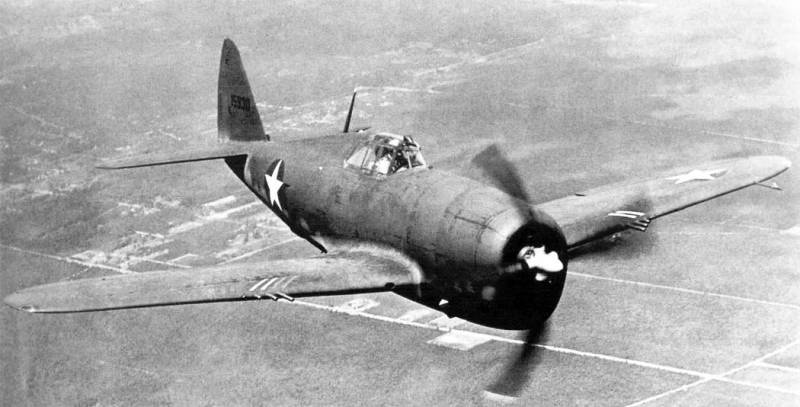
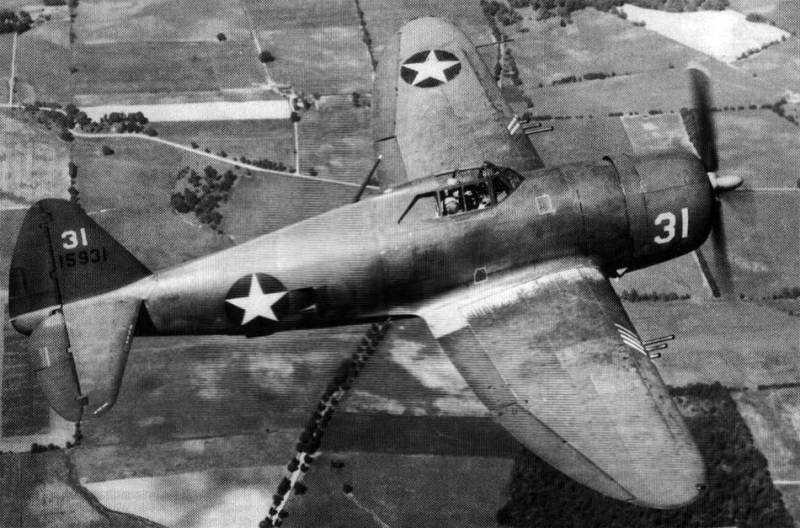
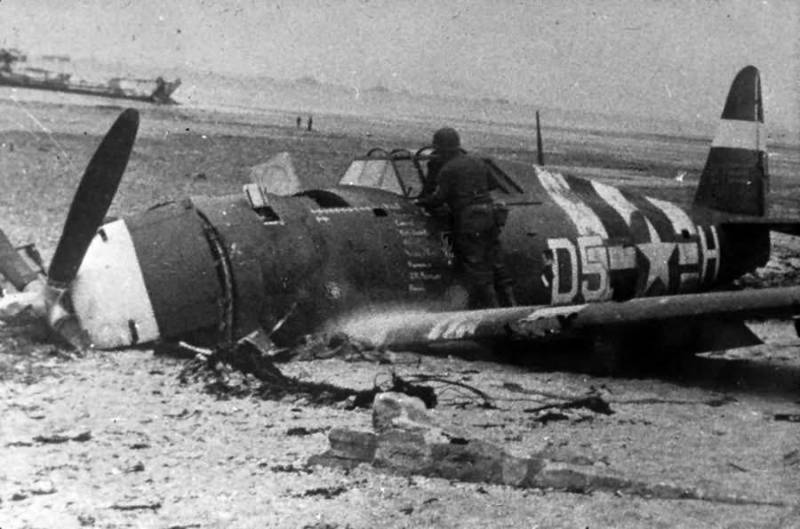
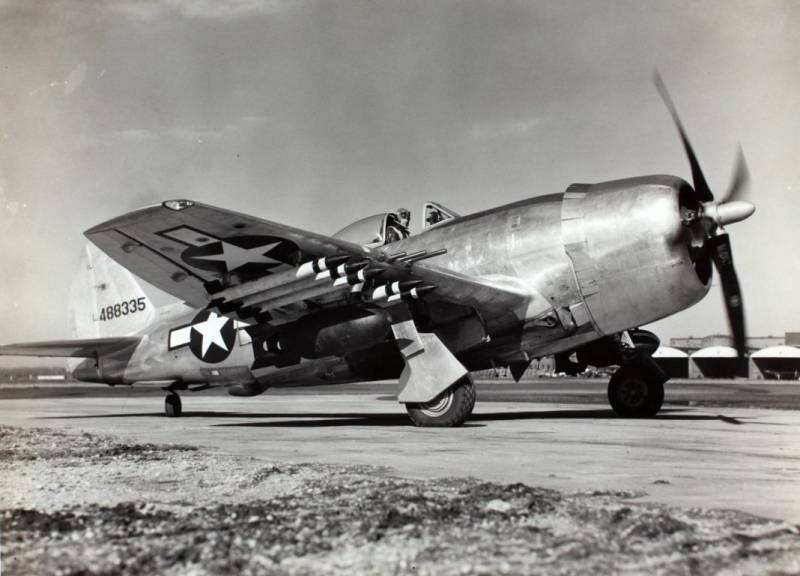
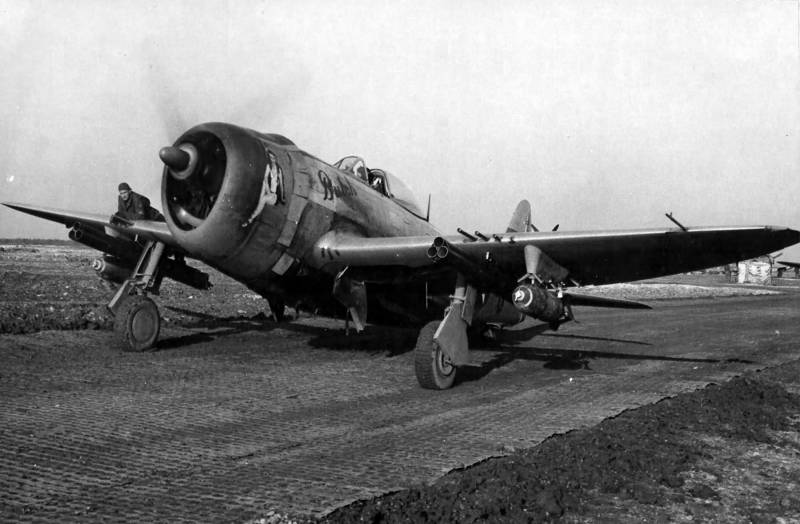
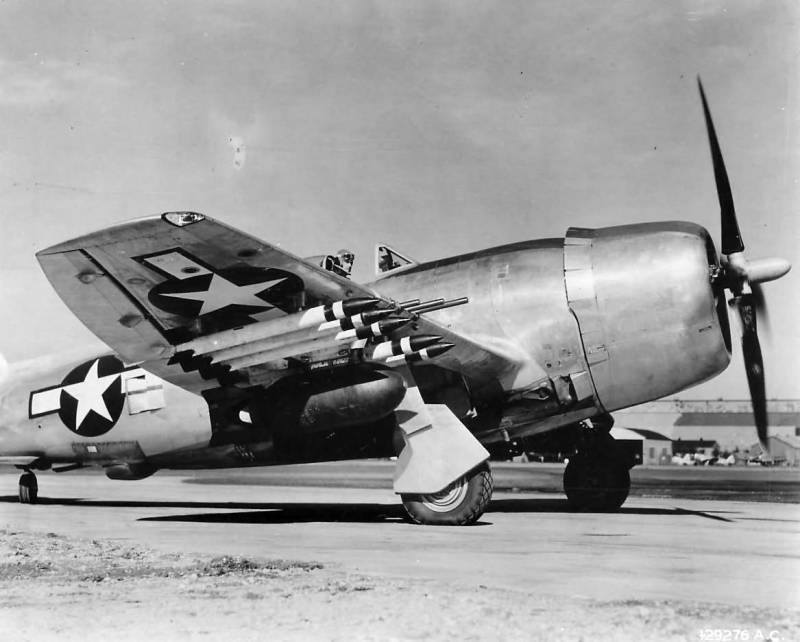
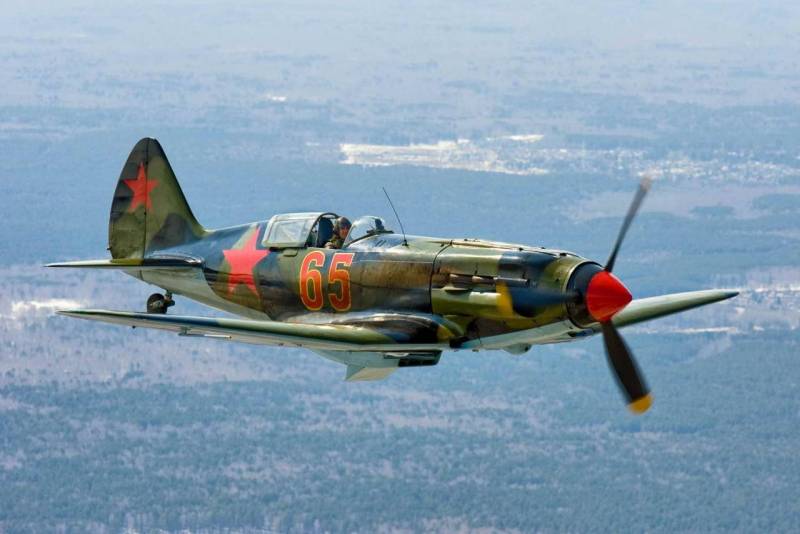
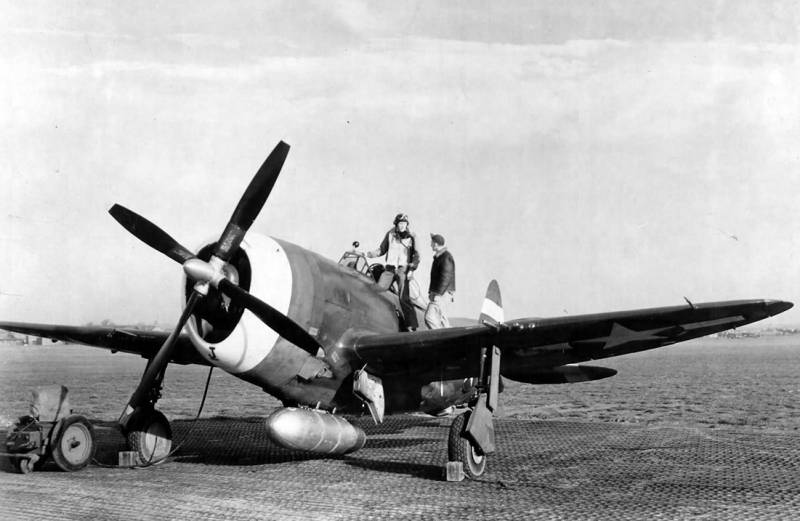
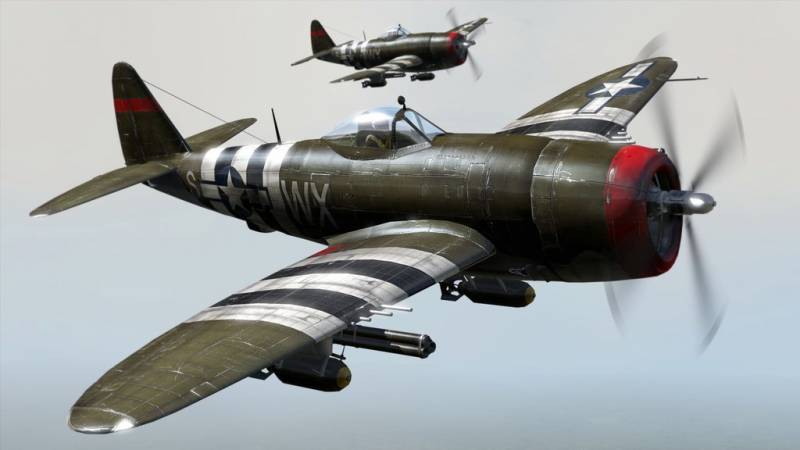
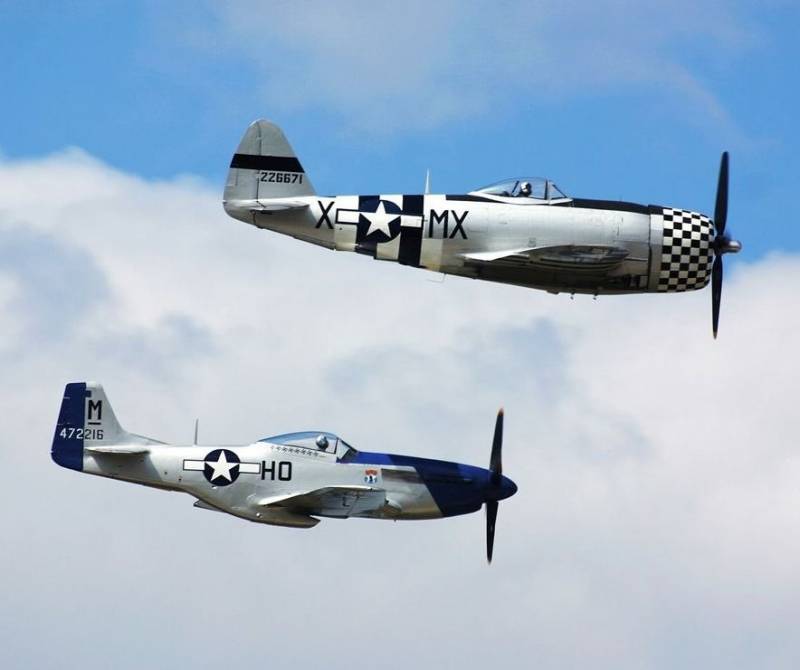
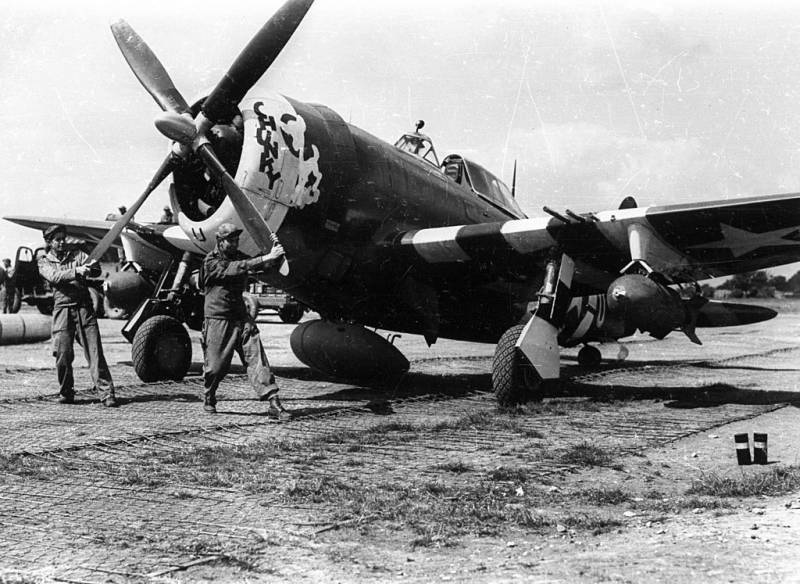
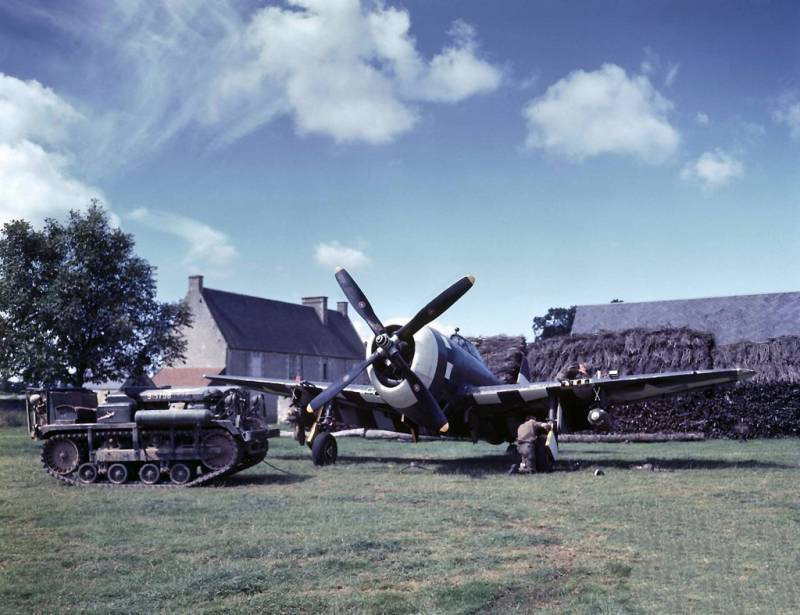
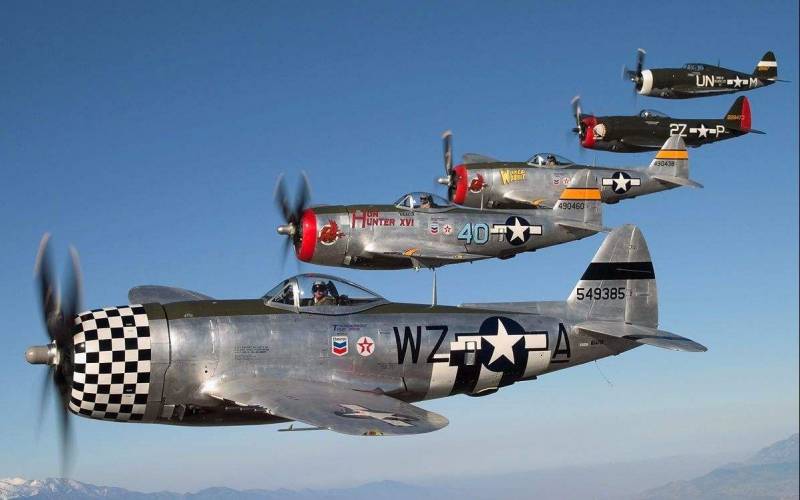
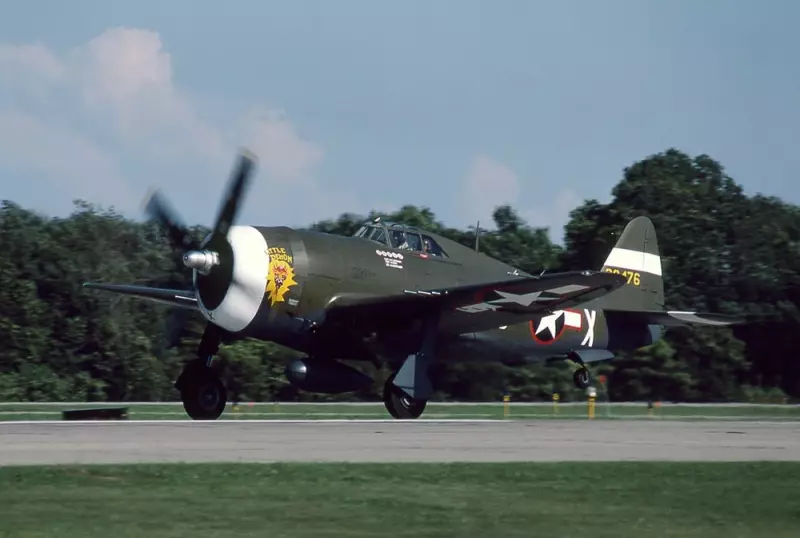
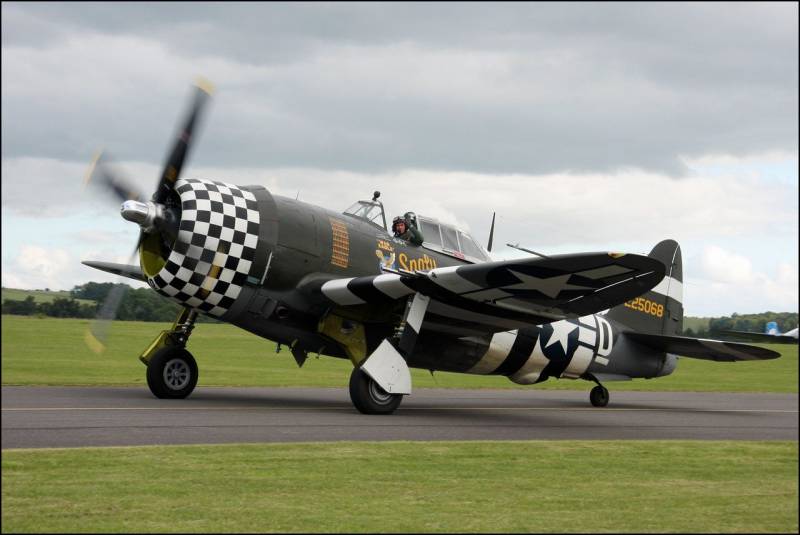
Information